PROTOCELL | An Intermediary between the in-organic and the organic world.
a few days ago, I posted an articcle"Origin of life" where I explained how science has been able to explain how Life could have evolved from the primordial non-organic molecules and the energy conditions that could have catalyzed the reaction. On this topic, I recieved a comment from @scienceblocks who made mention of how scientists have made extensive efforts in creating an artificial life. wow! a great contribution. However, this comment prompted the idea of sharing this today.
Science has been tireless in trying to close the gap between the non-living and the living. it is well known that all living organisms are made of tiny molecules that are not living, this give a reason for a connection between the inorganic world and the organic world. however, in order to connect these worlds science has been trying to create a model that is made of inorganic molecules and at the same time mimic the biological cell in structure, morphology and function. In order to produce an artificial model that would mimic the living cell, it is desirable that the model satisfy the criteria for a biological cell before it can be declared a living system.
Biological cells and their unique properties
A biological cell is the basic structural and functional unit of all living organism. It serve as the building block for every living system by possessing the key characteristics and functionalities of Life. From a biological view, a living cell can be seen to be a system with a definite boundary containing reproducible hereditary instructions in form of nucleic acid molecules, and that metabolize by controlling the rate of chemical reactions using the proteinaceous catalyst called Enzymes. Although, defining a cell in this way is not bad, but a living cell possess a unique quality, “Autopoiesis”. This is ability to self maintain, self-organize, self-reproduce, evolve and die.
- A stable, semi-permeable membrane that encloses cell constituents protecting them from being damaged by the external environment while allowing selective material and energy exchanges.
- Biomacromolecules (DNA or RNA) that carry the genetic information, control the dynamics of the cell, and endow it with the capability of evolution.
- A series of metabolic pathways used for providing energy to cells, to make them self-maintain and self-renew, as well as self-process information. ncbi
The Protocell
To begin with, it was suggested that the biological cell we have today would have evolved from a simpler precursor that is simple enough to carry out life activities. This model was called a Protocell. This structure being a precursor for the first cell serves as an intermediary that closes the gap between the inorganic and the organic world. In order to serve this function, it has to support the two sides (inorganic and organic); on the first side, the protocell must be made of inorganic primordial molecules that supports life and which can be formed by elements present on the early Earth, while on the other side it has to possess basic functionalities of a living cell. This primordial structure must posses unique features that allow it to grow, replicate and evolve.
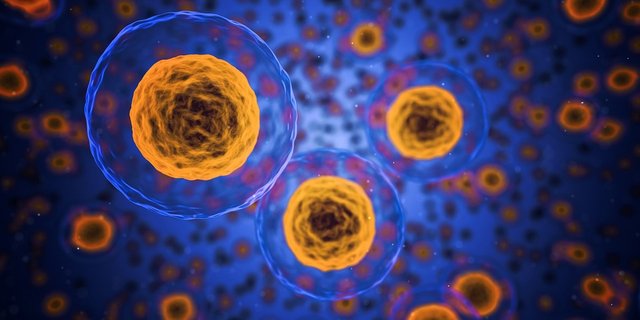
licence: CC0 Source: pixabay
- A membrane : a bilayer structure that encapsulate the structure, separating it from the environment and this also create a medium for transmissive communication (material exchange)
- An RNA molecule that houses, and interpret genetic codes, this genetic code organizes and controls metabolic pathways, and maintain biological function. This RNA is responsible for cellular replication.
The plasma membrane of a biological cell serves as a protective sheath separating the body from the surrounding environment. The plasma membrane is composed of a complex amphiphilic phospholipid structure that possesses an hydrophilic head and an Hydrophobic tail.
The fatty acid membrane grow by incorporation fatty acid monomer, micelle or vesicle in the chain thereby creating a spontaneous increase in the bulk of the membrane. When the size get to a critical value, the vesicle divides into daughter protocells due to thermodynamic imbalance. There is a random division of RNA replicases between the two daughter cells.
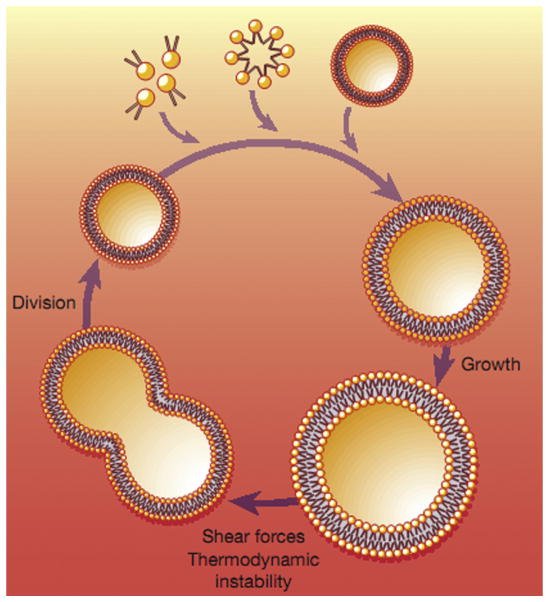
Division of a protocell by adding fatty- acid monomers or micelles
licence: CC BY-NC-ND Source: ncbi
Another major characteristic of a living cell is the ability to evolve by natural selection. This is the ability of a living organism to produce an offspring with predominant potentials that favors survival in the environment. The theory Evolution by natural selection was proposed by Charles Darwin and Alfred Wallace. In this theory, it is stated that natural selection gradually leads to predominance of genes that favors survival and reproduction in that particular environment. That is, traits (either innate or mutated), found in parents, that are most favorable for survival and reproduction in their environment have a greater chance of passing on to succeeding generations. This phenomenon gives rise to a stronger species that are better suited to the particular environment and lifestyles. During the replication of a protocell, there are mistakes at times causing a mutation in in the RNA of the daughter cells. This mutation can give rise to a poorer or better species thereby providing a room for competing for survival.
Antonymous pathways engineering an artificial cell.
The artificial cell (protocell) that could exhibit features of a true cell can be created by two pathways – the bottom – up pathways and the top – down pathway. These two pathways are different and opposite views of engineering a protocell.
The Top – down pathway involves simplifying the genome of a living cell to a minimal cell. the minimal cell is a cell with a less number of genomes as a result of knocking out of non-essential genes. In this course, there is knocking out or replacement of genes that are not very essential in carrying out life processes. That is the cell is left with genes needed to survive and not to perform special function. This procedure tends to provide a knowledge of the basic life processes and its requirements for creating an artificial life.
The Bottom – up pathway involves building an artificial cell by combining simple molecules that were proposed to have existed in the early earth. With the availability of the right catalyst and energy supply, these molecules tends to aggregate in the right proportion to form complex biomolecules. The Miller-Urey experiment prove how prebiotic gases (methane, ammonia and hydrogen) with water and lightening could have formed amino-acids which are building blocks for living cell.
Benefits/advantages of the artificial Bio-engineering
The subsequent experiment being carried out in order to synthesize a protocell/artificial cell does not just follow a closed pathway that ends in creating an artificial life. Although being that a true cell has not yet been engineered from a protocell; there has been a significant application of this knowledge in different scientific sectors like medicine, biotechnology, cell engineering and bioenergy.
It has helped in the establishment of facts and theories that explains how cellular life could have evolved, providing knowledge that bridge the gap between the non-living and the living. it has also helped in synthetic biology where new cells are being synthesized with new features that are absent in biological cells. Drug distribution and delivery to target organ; biomedical applications such as replacement or supplement of
deficient cells to improve health are also significant advantages.
References:
- Origin of Life: https://steemit.com/science/@okunlolayk/the-origin-of-life-abiogenesis-or-the-bridge-between-the-in-organic-lifeless-and-the-organic-living- Artificial cells: https://www.ncbi.nlm.nih.gov/pmc/articles/PMC5222523/
- Abiogenesis: https://en.wikipedia.org/wiki/Abiogenesis
- Definition of Life: https://www.britannica.com/science/life
- Protocell replication: https://www.nature.com/articles/ncomms9352#f2
- http://exploringorigins.org/protocells.html
Referential source links for this article are included for further reading and all illustrative Images are credited to their various sources. Thank you.
Best Regards!!

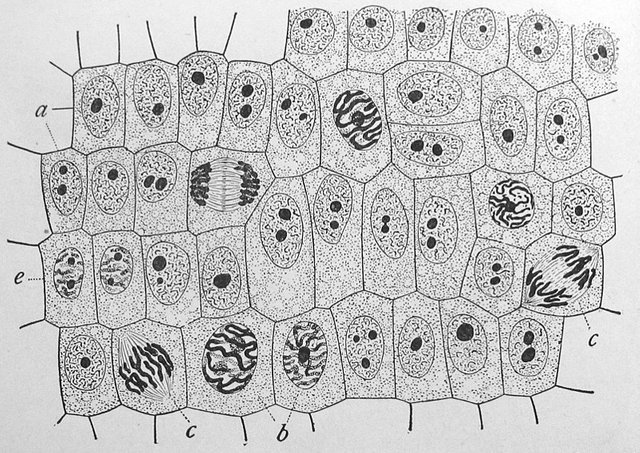
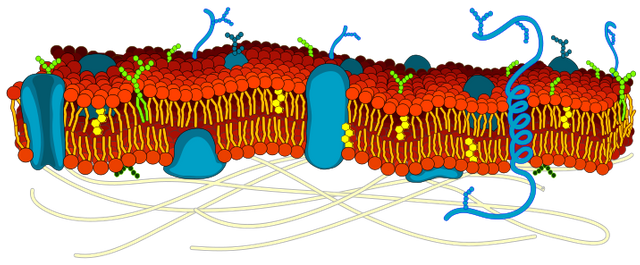
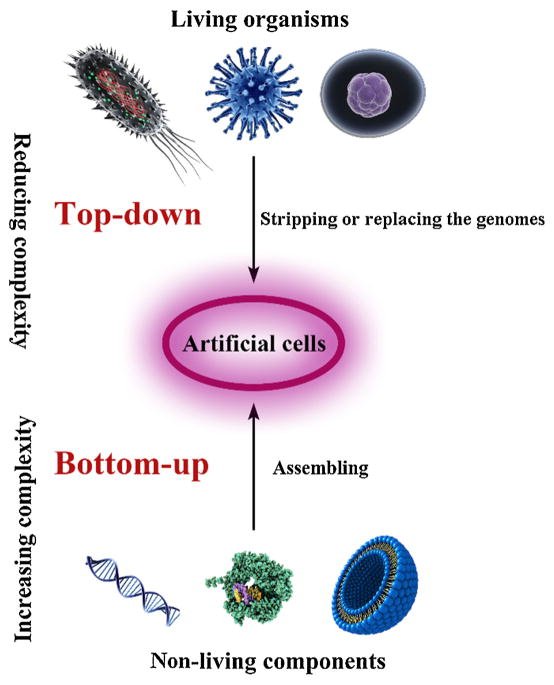
CONGRATULATIONS....
YOUR AWESOME POST WAS SELCECTED IN THE @wafrica DAILY CURATION
COURTESY: @julietisrael
Nice Job. 👍
Loved this post. However, I don't completely agree with the point that natural selection is must for it to have "life". Let's just assume a arbitrary self sustainable and reproducing entity. It doesn't have to be typical biological cell. But what it can do is get components from environment to promote its own growth and make copies of self. Now, selection here will arise by default.
Let's say this arbitrary entity was surrounded by molecular components it needs. Let C be concentration of these components. Then change in concentration of these components will be inversely proportional to copies produced by entity. As can concentration decreases so will the proliferation.
Now, if with time this entity do not comeuppance with ways to lie dormant until it finds a new source, or active forage for source it will just degrade by basic laws of thermodynamics. So if entity doesn't cope with environment it's extinction is inevitable, however we classify it. One way of coping with environment is to make a lot of copies let there be errors. (Maybe God should have said let there be errors, instead of let there be light). If rate of error is too high it will face extinction again. But at certain threshold of errors this will generate adaptive radiation. So in case of environment change probably one in million copies of this entity will survive and give rise to its copies.
So selection pressure and ability of entity to respond to it is a predictor for how long will it self sustain. A day or a million years. Nevertheless, IMO, that should not rule out self sustaining entity highly prone to going extinct under small change in surroundings.
Protocells made till date lack ability to self sustain without an artificial system to provide them with nutrients. A lot like virus. It has stuff it wants to replicate, but not enough machinery to do it. It's sustainablity depends on coming in contact with a host and infecting it.
Nevertheless, this is good stuff. Looking forward to read more of it.
wow!! an nice contribution
I like this. thanks @scienceblocks
This post has been voted on by the steemstem curation team and voting trail.
There is more to SteemSTEM than just writing posts, check here for some more tips on being a community member. You can also join our discord here to get to know the rest of the community!